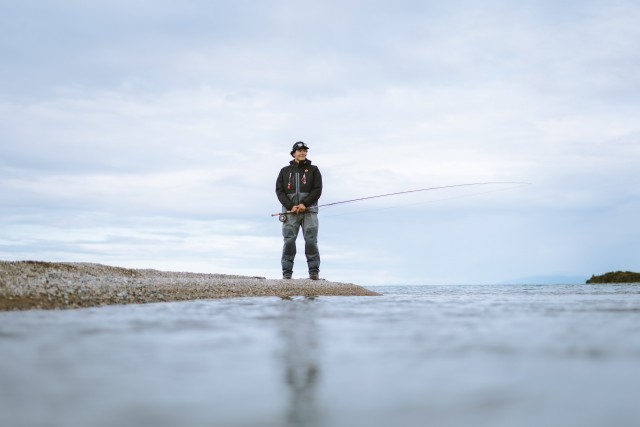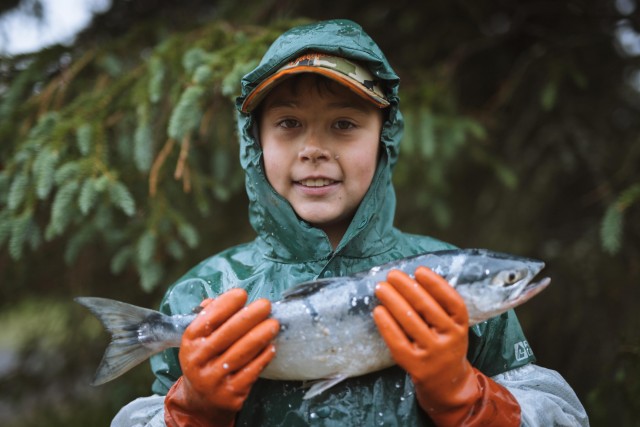As the repercussions of climate change continue to disrupt the delicate balance of life here on Earth, the influx of environmental documentaries submitted to S/W is on the rise. With an abundance of crucial narratives, it becomes challenging to allocate the deserved attention to each. Nevertheless, as the volume of climate-focused films grows, so do our curatorial standards. To be a S/W championed environmental short, it takes more than a strong message; it requires attention-grabbing craft and a flawlessly paced edit. Today’s featured film, School of Fish by Colin Arisman (Finding Gulo) & Oliver Sutro, serves as a perfect example.
A David and Goliath style story which sees the residents of the Bristol Bay area in Alaska fighting to preserve their local fishing industry – vital to their income and culture heritage – from the pollutions of a massive mining operation nearby, School of Fish is a focused story with a global impact. Co-director Sutro sheds light on the prevailing perception of potential mining in Bristol Bay, claiming that the world has largely looked at it “as an ecological and economic disaster waiting to happen”. While acknowledging the truth in this perspective, he’s also keen to emphasise that we might be overlooking a bigger picture, one that encompasses the interconnectedness of all that is linked to these fish.

“When we met Tristons family on our second shoot, it all became clear how important this story was.” – co-director Sutro on their aims for the short.
With the local Alaskan Yup’ik culture rooted in hunting and fishing, the annual return of salmon to the area holds profound significance for the community, a vital element skilfully captured in Arisman and Sutro’s short film. Rather than simply capturing this story, the pair want their viewers to be immersed in the environment and spend time alongside the locals. In a way, the residents of the Bristol Bay area are more than just participants in this film; they are collaborators.
And this collaboration was essential to the filmmakers when developing the film, with Arisman describing his filmmaking approach as being influenced by the concept of “participatory filmmaking”, they strived to include their interviewees in shaping their narrative during both production and post. By asking the residents, “What do you hope to get out of this film?” the filmmakers found motivation in the trust bestowed upon them to tell this intimate story. This gratitude is evident throughout their production process, which is brimming with warmth and compassion.

“We were privileged to build a friendship with Triston’s family over meals . . . and the film was born from those shared experiences.” – co-director Arisman on the development of their short.
As alluded to earlier, while the message and spirit of the short contribute to its appeal, it’s the exemplary craft showcased in School of Fish that truly elevates it to a level we want to champion on our site. Arisman and Sutro employ a diverse range of techniques, including studio-style talking-head interviews, sweeping drone footage, and underwater cameras, to paint a compelling portrait of this community and their fight for survival. This variety of camera shots ensures that the short never feels repetitive and remains consistently engaging.
At almost exactly 19-minutes in length, credit also has to go to Sutro’s editing for sustaining engagement throughout the film’s duration. Much has been said about the often under-appreciated role of editing in documentary creation and it’s evident in School of Fish just how important the cut is when it comes to connecting the audience to the subject. Sutro’s editing allows us to spend just the right amount of time forming bonds with the short’s interviewees—an essential element in our connection to the film’s message—while also setting the pace and tone. In the world of short films, 19 minutes can feel like a significant duration, but that’s never the case with School of Fish.
In showcasing Arisman’s previous doc, Finding Gulo, on our site, we declared it “a piece that is worthy of study by documentary filmmakers outside of the nature genre” and this sentiment holds true once again with School of Fish. While it is an “issue” film fulfilling its role of sharing an important cause with the audience, it also stands as a model example of how to elevate a film beyond these criteria. If you aim to craft a documentary that not only informs but also entertains your viewers, then Arisman and Sutro have provided a blueprint worth aspiring to.

 Rob Munday
Rob Munday